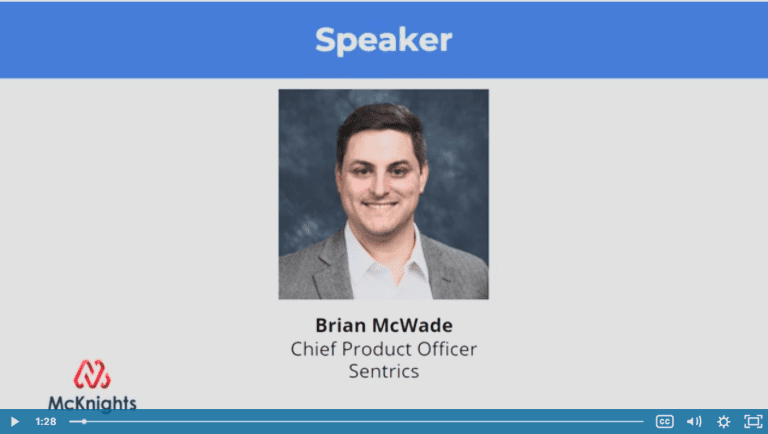As the population of older adults in the United States continues to grow, the intersection of healthcare and senior living is becoming increasingly important. Healthcare providers are recognizing the need to provide care that is tailored to the unique needs of seniors, while senior living communities are expanding their offerings to include more comprehensive medical services. In this article, we will discuss the trend for healthcare and senior living to converge, including the possibility of future government funding in senior care.
The Convergence of Healthcare and Senior Living
Historically, healthcare and senior living have been separate industries, with different goals and priorities. However, as the population of older adults in the United States has grown, there has been a greater recognition of the need for these industries to work together to provide more comprehensive care for seniors.
One way that healthcare and senior living are converging is through the expansion of medical services in senior living communities. In the past, many senior living communities focused primarily on providing housing and basic care services, such as meals and housekeeping. However, as the healthcare needs of seniors have become more complex, senior living communities are expanding their offerings to include more comprehensive medical services, such as rehabilitation and skilled nursing care.
At the same time, healthcare providers are recognizing the importance of providing care that is tailored to the unique needs of seniors. This includes everything from addressing chronic conditions to providing specialized services such as memory care. By working with senior living communities, healthcare providers can provide more personalized care that takes into account the unique needs of seniors.
Future Government Funding in Senior Care
As the convergence of healthcare and senior living continues, there is a growing need for government funding to support these efforts. Fortunately, there are several potential avenues for government funding in senior care.
Medicaid and Medicare
Medicaid and Medicare are two government-funded healthcare programs that can provide funding for senior care. Medicaid is a joint federal and state program that provides health coverage for individuals with limited income and resources. It covers a wide range of medical services, including long-term care services for seniors who meet certain eligibility requirements. Medicare, on the other hand, is a federal health insurance program that primarily covers individuals who are 65 years old or older. It also covers individuals with certain disabilities and those with end-stage renal disease.
Both Medicaid and Medicare can be incredibly helpful for seniors who need medical care and assistance with daily living. However, navigating the complex rules and regulations of these programs can be challenging. Senior living communities that accept Medicaid or Medicare must comply with a variety of rules and regulations, including everything from maintaining accurate records to providing high-quality care.
In recent years, there has been a growing recognition of the need for Medicaid and Medicare to expand their coverage of senior care services. This includes everything from home-based care to long-term care in senior living communities. By expanding coverage of these services, Medicaid and Medicare can help ensure that seniors have access to the care they need to maintain their health and wellbeing.
Senior Care Act
Another potential source of government funding for senior care is the Senior Care Act. This legislation, which was introduced in Congress in 2021, aims to expand access to home-based care for seniors. The bill would provide funding for a range of services, including home modifications, transportation, and in-home care. By providing funding for these services, the Senior Care Act could help seniors live independently for longer, while also reducing the burden on senior living communities and healthcare providers.
The Way Forward
As the population of older adults in the United States continues to grow, the convergence of healthcare and senior living is becoming increasingly important. Healthcare providers are recognizing the need to provide care that is tailored to the unique needs of seniors, while senior living communities are expanding their offerings to include more comprehensive medical services. In order to support these efforts, there is a growing need for government funding in senior care.
Fortunately, technology can help unlock government funding for senior living communities by streamlining operations, improving documentation, and providing data-driven insights that can help demonstrate the value of the care provided.
Streamlining Operations
One of the most significant ways that technology can help unlock government funding for senior living communities is by streamlining operations. Many senior living communities struggle with complex, manual processes that can lead to errors and inefficiencies. By implementing technology solutions such as electronic health records (EHRs) and practice management software, senior living communities can automate many of these processes, reducing errors and freeing up staff time to focus on providing high-quality care to residents.
Improved Documentation
Another way that technology can help unlock government funding for senior living communities is by improving documentation. Medicaid and Medicare require detailed documentation of all care provided, including everything from medications administered to rehabilitation services. By implementing EHRs and other digital documentation tools, senior living communities can more easily and accurately document the care provided, which can help ensure that they receive appropriate funding from government programs.
Data-Driven Insights
Finally, technology can help unlock government funding for senior living communities by providing data-driven insights that can help demonstrate the value of the care provided. By collecting data on everything from resident health outcomes to staff productivity, senior living communities can more effectively demonstrate the impact of their services on resident health and wellbeing. This data can be used to support funding applications, as well as to identify areas where improvements can be made to further enhance the quality of care provided.
Take A Look At Sentrics360
As the population of older adults in the United States continues to grow, the need for high-quality senior care services will only continue to increase. By leveraging technology solutions such as EHRs, practice management software, and data analytics tools, senior living communities can more effectively demonstrate the value of the care they provide, which can help unlock government funding and support ongoing efforts to improve the quality of care for seniors. As such, it is crucial that senior living communities remain up-to-date with the latest technology solutions and continue to explore new ways to leverage these tools to enhance the care provided to their residents.
Sentrics will provide you with the data-driven insights and technology you’ll need int the future. With Sentrics, you will be able to create a RTLS eCall based system that is integrated with EMR, EHR, and is able to provide your community with the tools you need for better resident monitoring and better staff communication. By using Sentrics Ensure, your community can keep your residents safe, improve caregiver effectiveness, and reduce the risk of adverse events at the community and the costs associated with them. Not sure RTLS is for you yet? Take advantage of Ensure Lite while maintaining the option to upgrade to RTLS later.
The Ensure solution is part of an integrated suite, Sentrics360, which enables communities to gain a 360-degree view of your residents with data-driven insights which improves outcomes, enhances efficiencies, builds family confidence and reduces risk. Visit sentrics.net or call (888) 988-8210 for more information.



